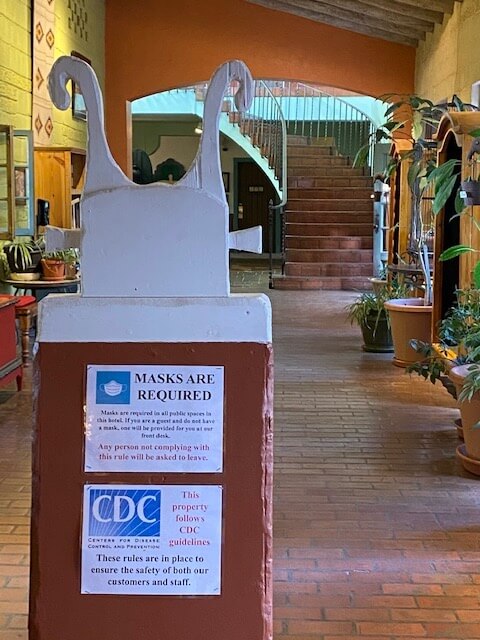
SAFE TRAVEL DURING COVID-19
If you must travel during the Covid-19 pandemic, look for hotels that follow strict CDC guidelines: 25% occupancy, extreme disinfecting practices, rooms left vacant for at least 24 hours between occupancies.
Recently my husband and I drove from Scottsdale to Denver. My pre-trip research surprised me. Chain hotels en route were more expensive than usual—probably due to reduced occupancy and extra cleaning—while some historic hotels were suddenly affordable. So, we thought, let’s not only stay safe from the pandemic, but learn some history, too.
We booked historic Harvey Houses (circa 1876-1967). Fred Harvey partnered with the Atchison, Topeka and Santa Fe Railroad to develop railway-stop restaurants and then hotels with a reputation for high standards, fine dining, and excellent service, provided by well-trained waitresses called Harvey Girls.
La Fonda on the Plaza is Covid-19-Sensitive
Our half-way rest point was La Fonda on the Plaza, a classic Pueblo-style hotel in downtown Santa Fe.
In 1922, La Fonda (The Inn) was resurrected as a Harvey House. Architect Mary Colter designed Harvey Houses in an historical revivalist style that reflected a reverence for Southwest Native American tribes.
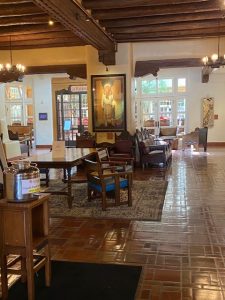
La Fonda is known for its original décor in the lobby,
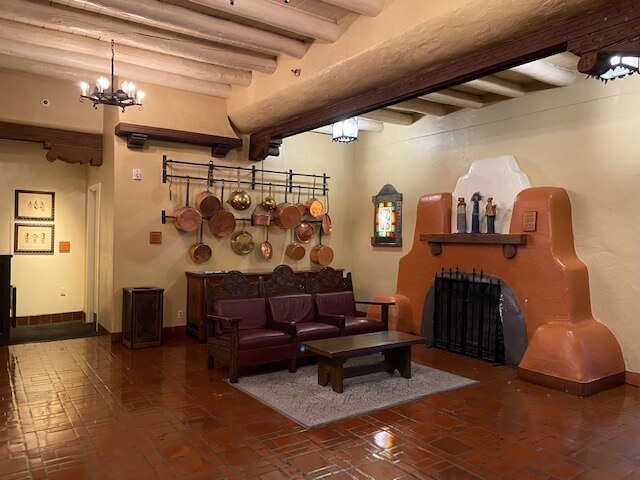
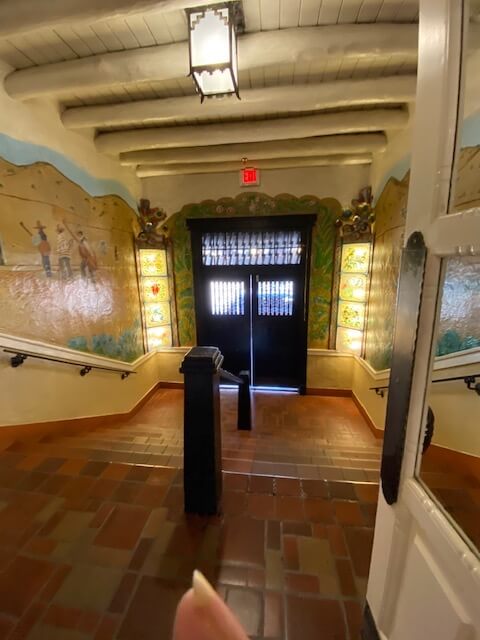
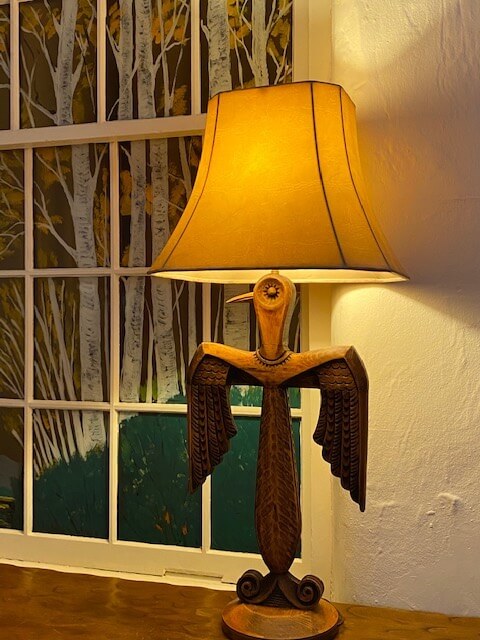
and for hand-painted headboards in the comfortable bedrooms.
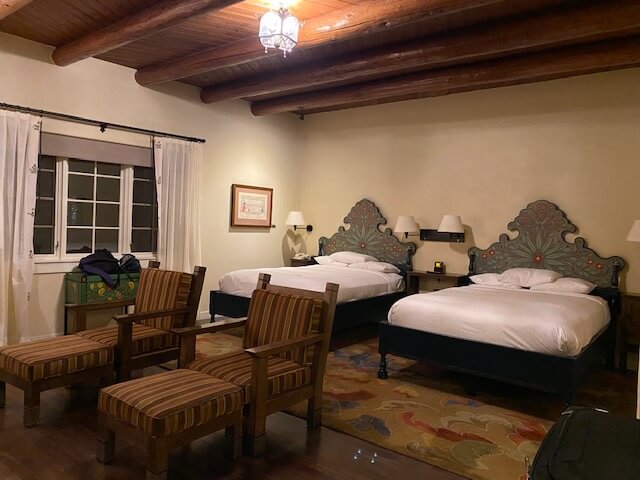
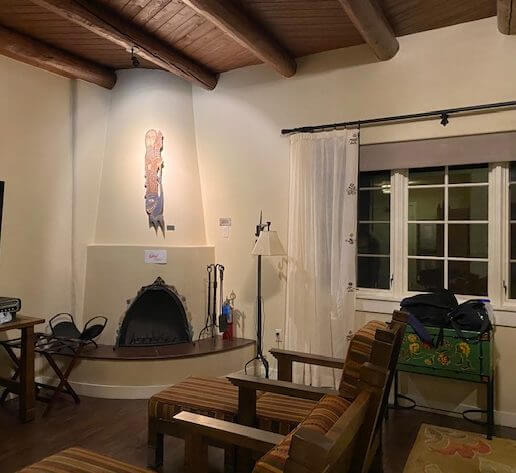
Few of Santa Fe’s famous restaurants were open, except for curbside service, so we enjoyed La Fonda’s rooftop terrace with views of the town and the mountains.
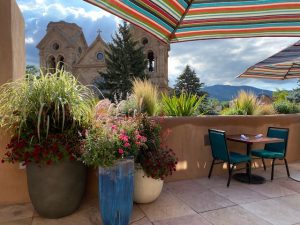
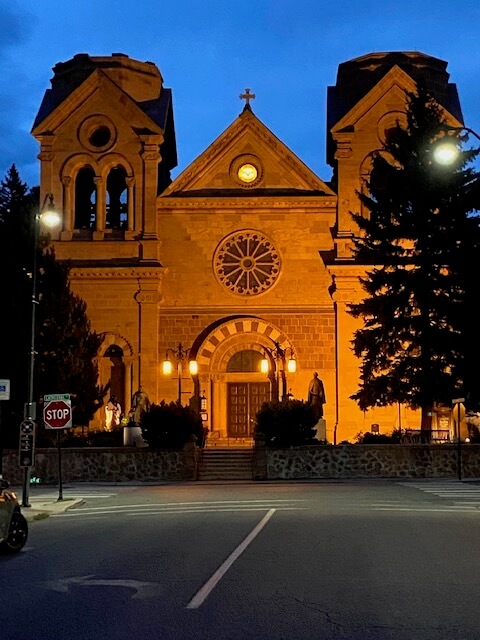
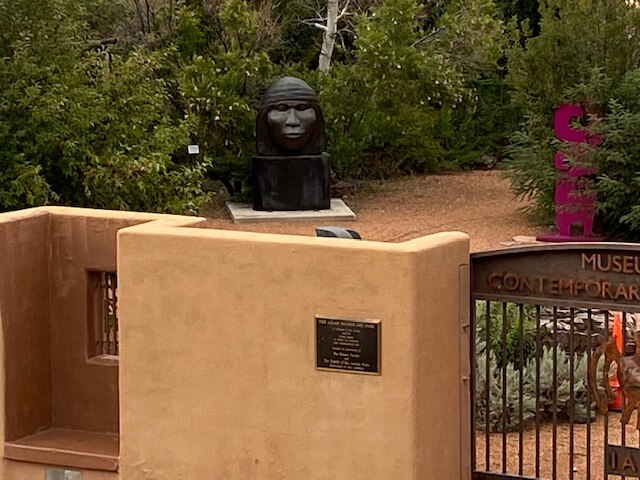
The good news: La Fonda has chargers for electric cars. The other news: Mask rule violations in New Mexico come with fines.
La Posada is stringent about Covid-19 rules
On the way home, we stayed at another Harvey House, not only on the railroad line but also on Route 66.
La Posada (The Resting Place) was refurbished in 1930 and is situated on a large landscaped property in Winslow, Arizona, one block from the famous “Corner.” It, too, is an Adobe-stle structure with a red tile roof and lovely gardens between the wings.
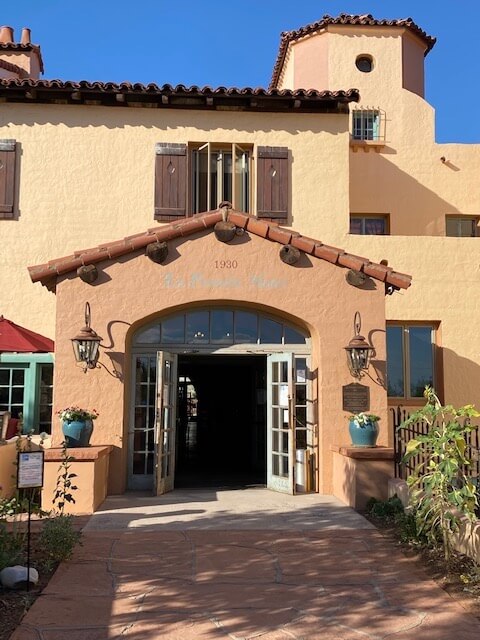
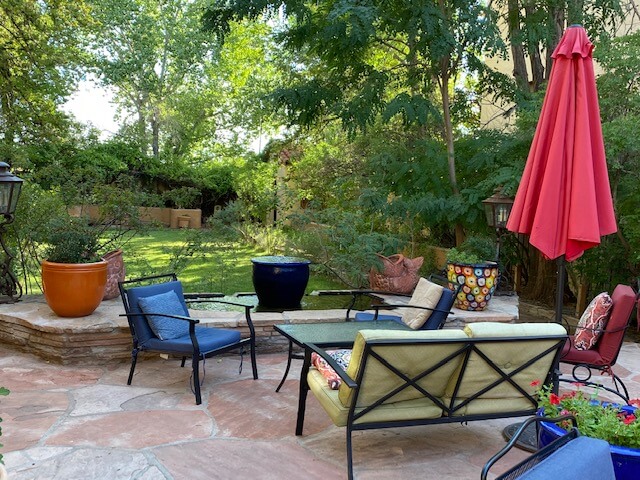
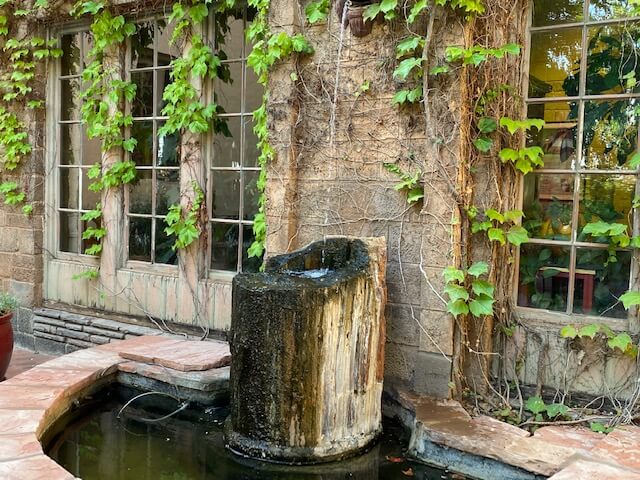
You need more than overnight to absorb all the hotel history. It starts in the Trading Post. While you register, you can admire a museum of local art, much for purchase.
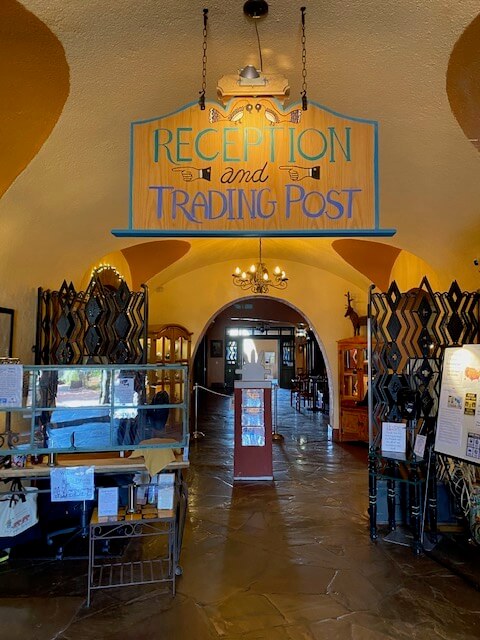
Then you focus on the hallway decor, replica headboards from La Fonda.
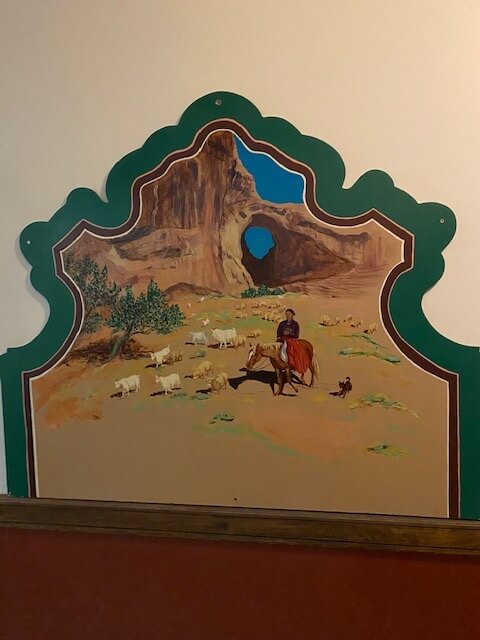
By each of the 54 doorways, you will find a biography of someone who stayed in that room, from Amelia Earhart, Einstein, and FDR to Howard Hughes, Jackson Browne, and the Doublemint Twins. This was outside our room:
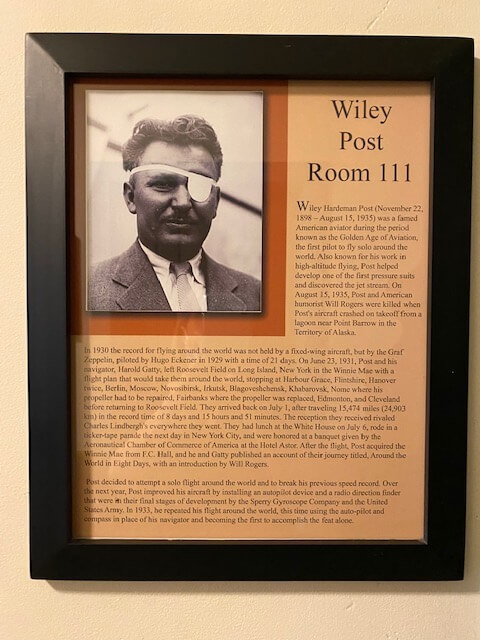
On another day you can peruse the art gallery in the ballroom. We saw an exhibit of America’s first ladies by Tina Mion.
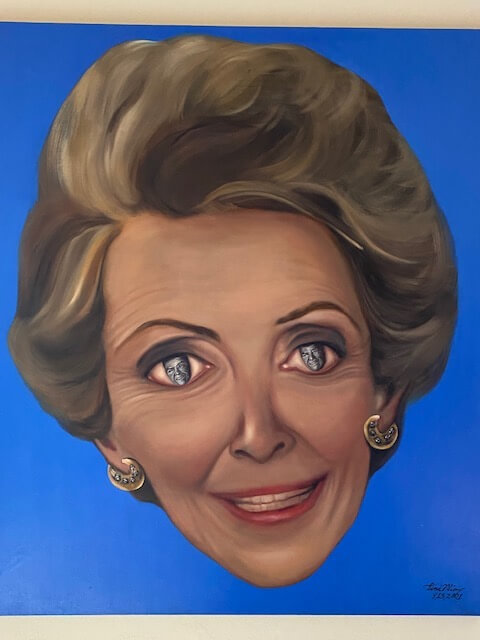
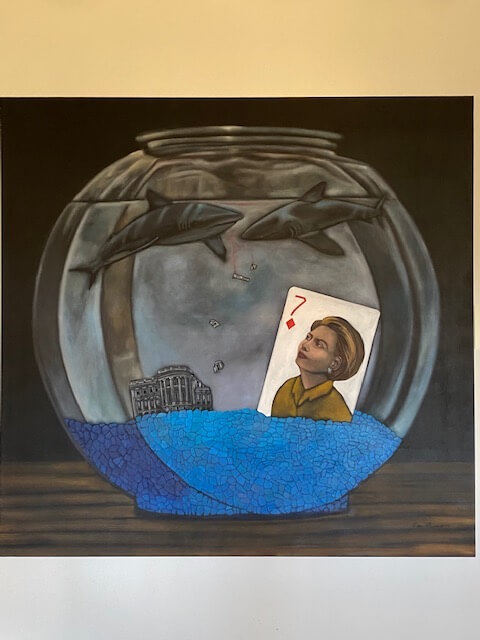
The good news is the excellent food.
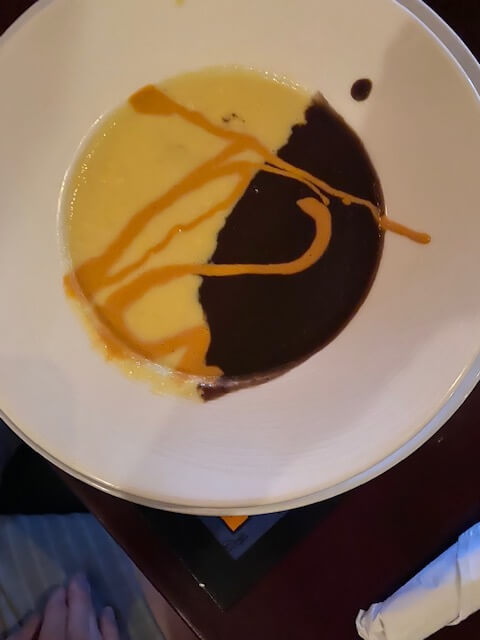
The other news is the indoor restaurant—but with social distancing.
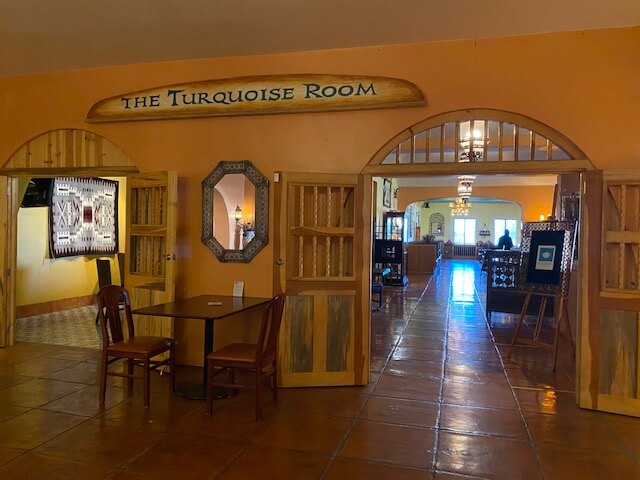
And for a fun outdoor activity, you can “get your kicks on Route 66” by “standing on a corner in Winslow, Arizona.”
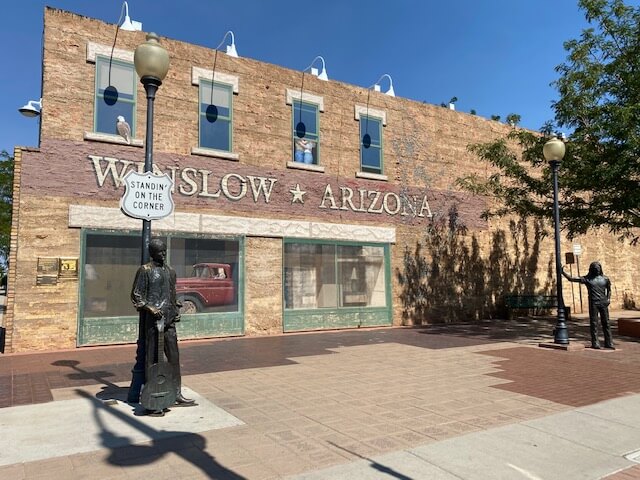
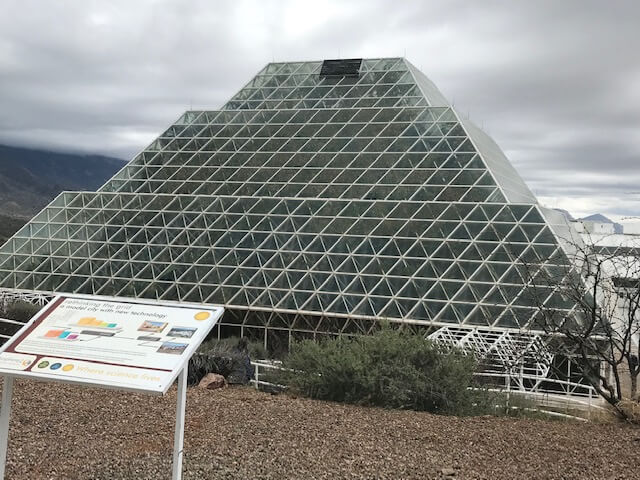
Biosphere 2: Ingenuity, Problem-Solving, and Hope
Readers of this blog know that for the last few years my travels have pursued the truth about climate change. I refuse to listen to uninformed politicians. I go where people know things.
Politicians say that climate always trends. Visiting our National Parks has taught me that climate trends have never changed this fast. Some species have no time to adapt. They are going extinct. Rapid warming drives tropical bugs and diseases north, and people have no time to adapt to malaria, dengue fever, chikungunya, and zika.
Visiting Alaska showed me rapid glacial melting, which raises sea levels; and permafrost, a storage sink, which when it melts releases disease-causing microbes, methane (34 times more destructive than greenhouse gases), and poisonous mercury into the atmosphere.
Biosphere 2 (B2)
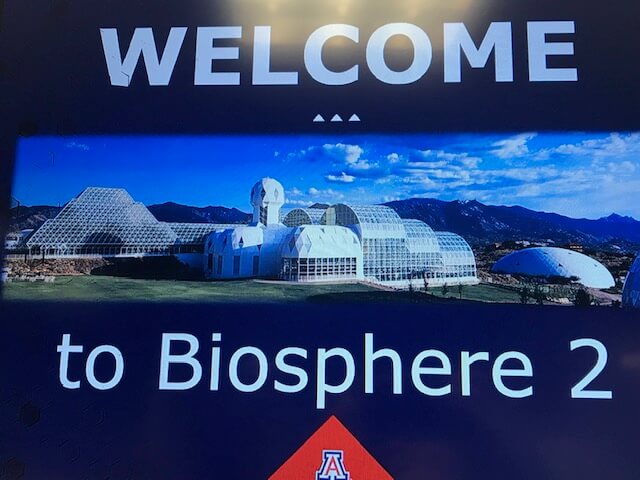
Space exploration motivated the concept of Biosphere 2. In 1991, 8 scientists entered a huge sealed glass structure north of Tucson enclosing 7 ecosystems to observe what it takes to sustain life in a controlled environment which could be theoretically used to colonize Mars. Kind of like in Peter Weir’s Martian. Except that B2 agricultural research already knew that when the main character “waters” his potatoes, the salt in his unprocessed urine would kill them.
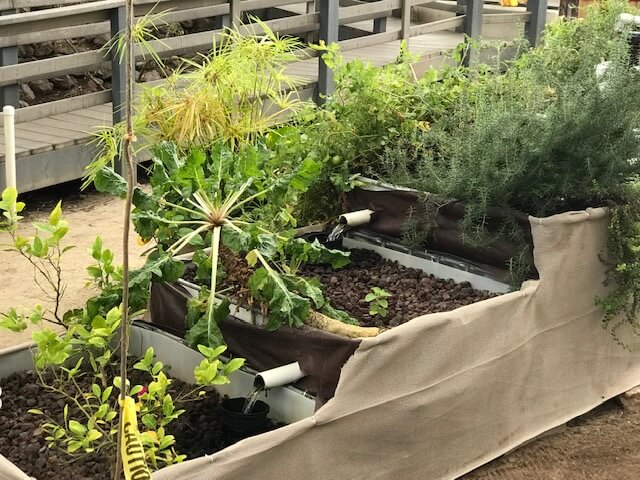
Now directed by the University of Arizona, the B2 complex is unsealed and involved in different groundbreaking discoveries, the most compelling one for me being the research on carbon dioxide.
Rainforest Experiments
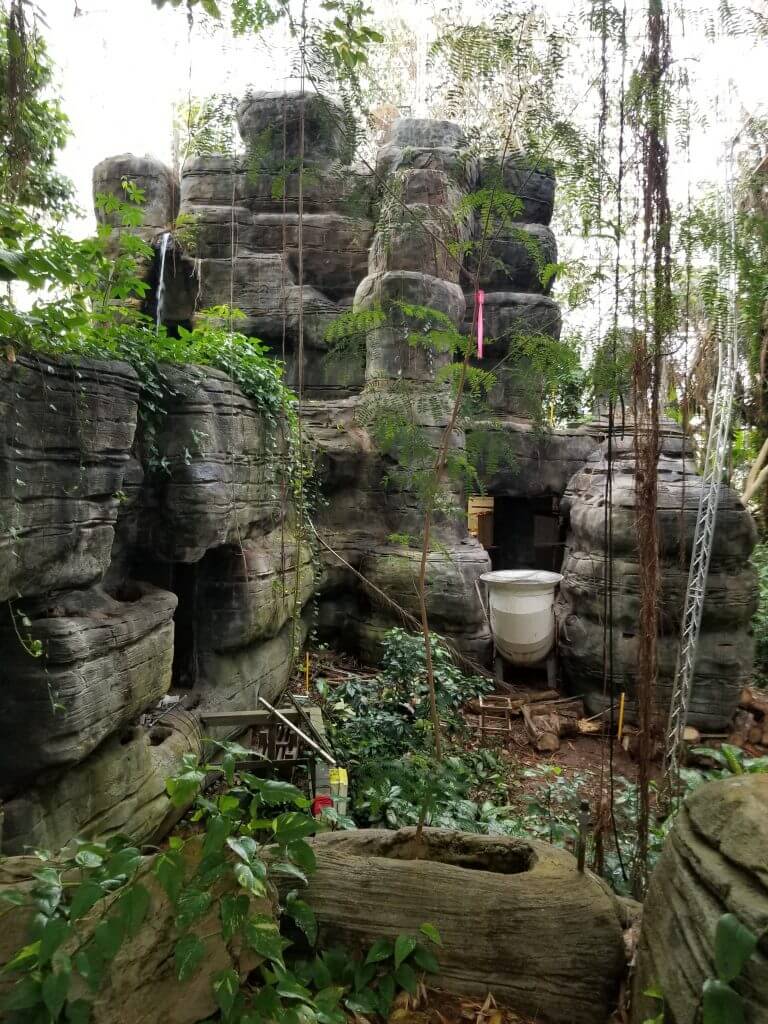
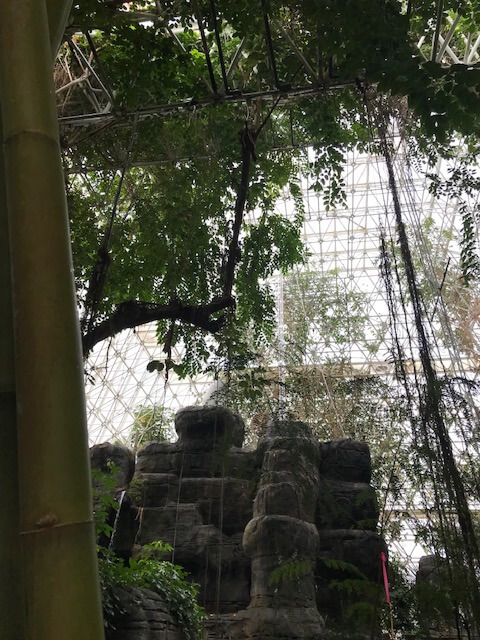
Why is this research important? Because the White House is launching a new climate change study, led by a non-climate scientist who says “carbon dioxide is natural and…[therefore] not harmful.”
Hey, one glass of wine is natural, but six glasses…harmful? What does a breathalyzer say?
An experiment in the B2 Rainforest revealed some shocking information about CO2.
Rainforests clean our air by absorbing about 40 percent of manmade carbon dioxide. During the late 1800’s, the CO2 in our atmosphere measured 200 parts per million. Today it has risen to 400 parts per million. The B2 experiment discovered that once carbon dioxide rises over 600 parts per million, the rainforest can no longer absorb and reprocess it. That’s a problem.
Deforestation also diminishes the amount of cleaning a rainforest can do. We must work harder to protect it.
Coral Reef Experiments
So what happens if too much CO2 remains in the atmosphere? B2 experiments on coral reefs give us answers.
Elevated levels of carbon dioxide in the atmosphere increase the amount that dissolves in the oceans, which raises acidity. Acidity prevents coral from building skeletons and shellfish from building shells. Coral reefs are disappearing faster than rainforests, but statistics vary, so I’ll just say: reefs could all go away during your children’s lifetime.
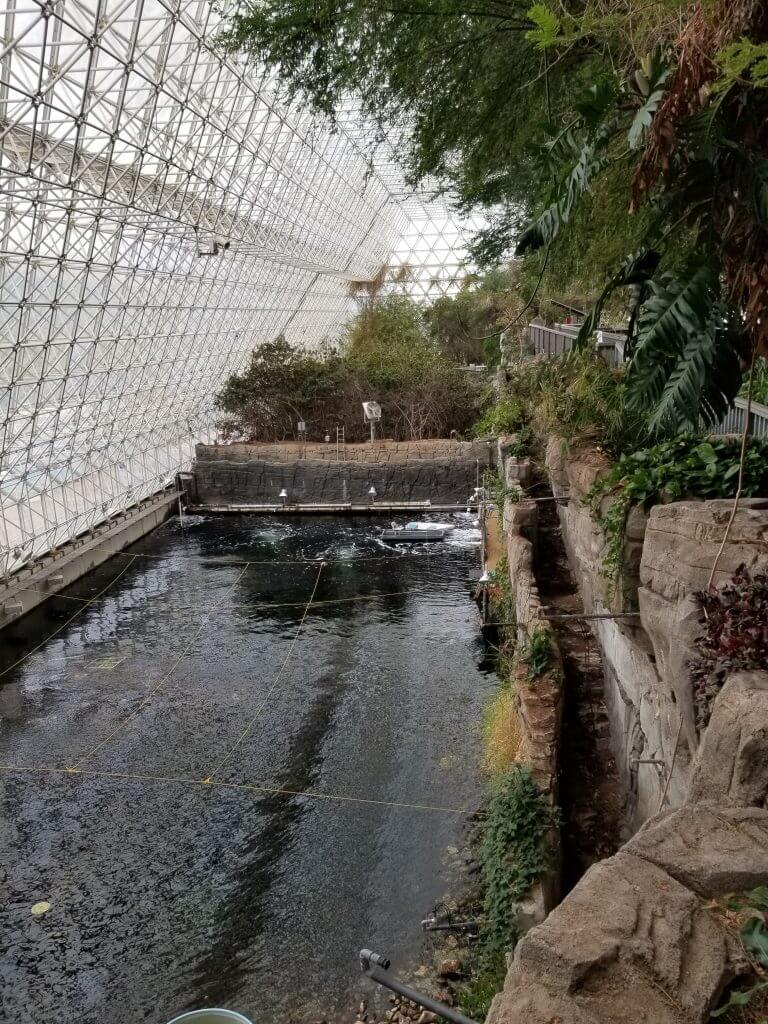
Reefs are important spawning and feeding grounds for fish. To lose fish as a food source would lead to catastrophic food shortages. Couple that with the drought shortages, and it’s enough to make a Mother Earth cry.
Hope
The Biosphere 2 Ocean will soon test new types of CO2-resistant coral. If you visit a year from now, scientists may offer new information and hope.
Other Exhibits
These are just a few of the important research studies you’ll see, not to mention displays about the human atmosphere created by 8 people locked in a 3.14-acre greenhouse for 2 years.
Entrance is cheap, $22 for adults; kids and seniors are less. Plus, there’s a coupon on their website. Check Groupon, too. Then visit and learn for yourself.
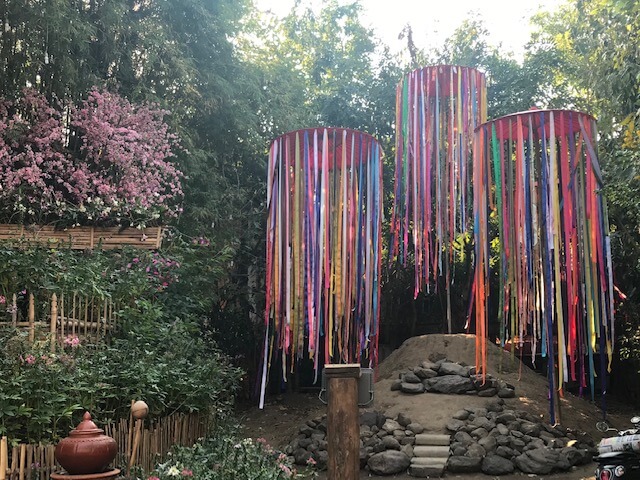
The Smells and Tastes of Chiang Mai
Visiting Bangkok is an adventure, but after a while you just want to escape the smell of garbage and seek out more fragrant lands, like Chiang Mai to the north.
Thailand is known for its fruit (see Monica Adair’s blog on local foods). I am known for my love of mangos, and totally by accident our airport taxi pulls up to this restaurant on the front of our hotel in the Old City.
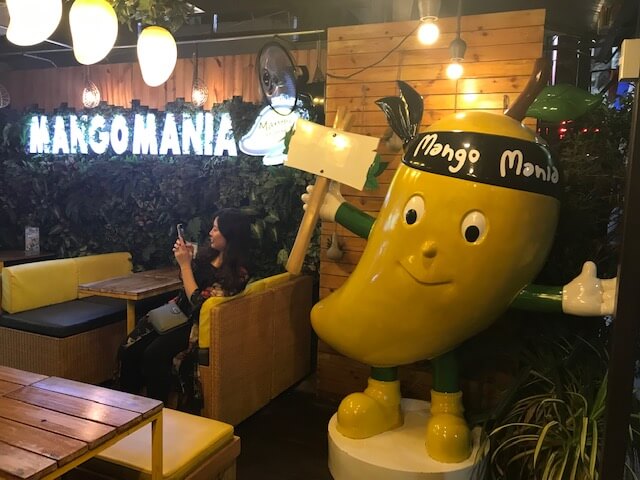
We checked in and went here immediately for tasty sliced mango and sweet sticky rice and cream.
On the corner was another restaurant all decked out for Valentine’s Day.
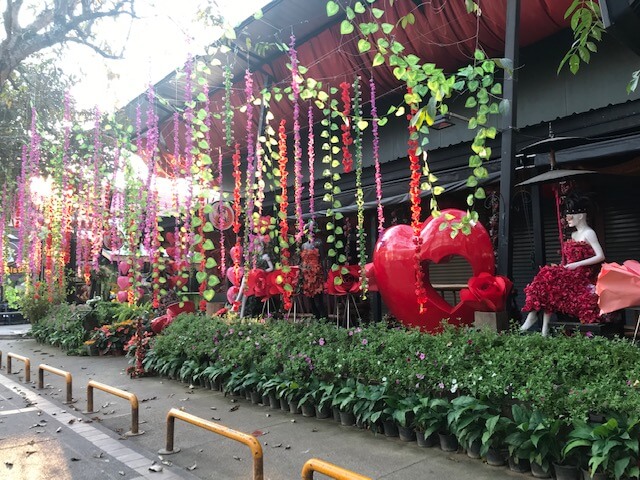
You could almost smell the chocolate, which we found around the corner. Ever have rolled ice cream? It’s great. It starts out with chocolate cream and extras, like almonds, spread flat on a frozen metal plate, then rolled, three inch pieces at a time.. After whipped cream, voila.,
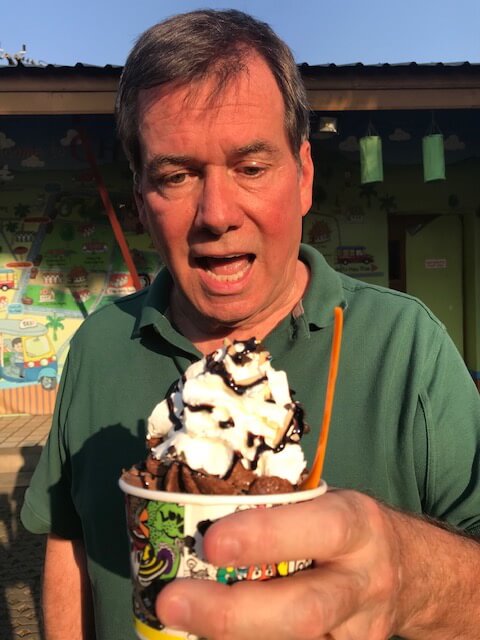
Just behind the ice cream place we went for a massage. Usually massage parlors smell like sandal wood aroma therapy and oil. This one was open air with Thai Massage, where you leave your clothes on and get stretched as far as your muscles will allow. Sometimes painful in progress, but so much relief afterwards.
Around the other corner was a mango colored shrine sparkling in the sun, part of Wat (temple complex) Chedi Luang.
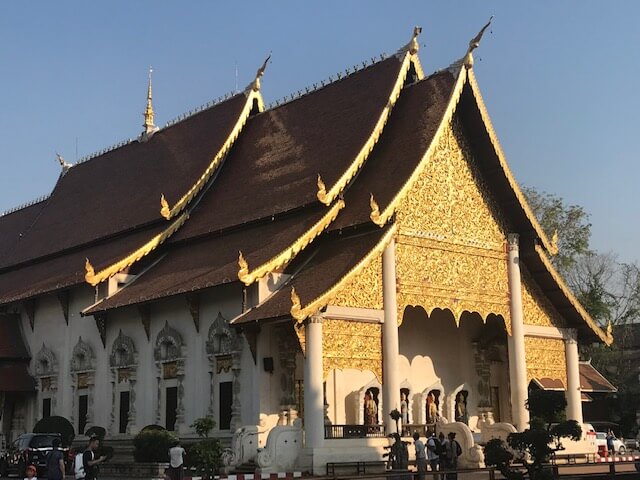
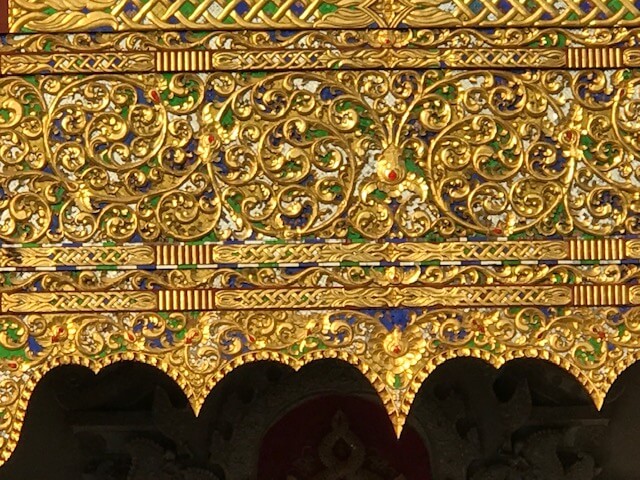
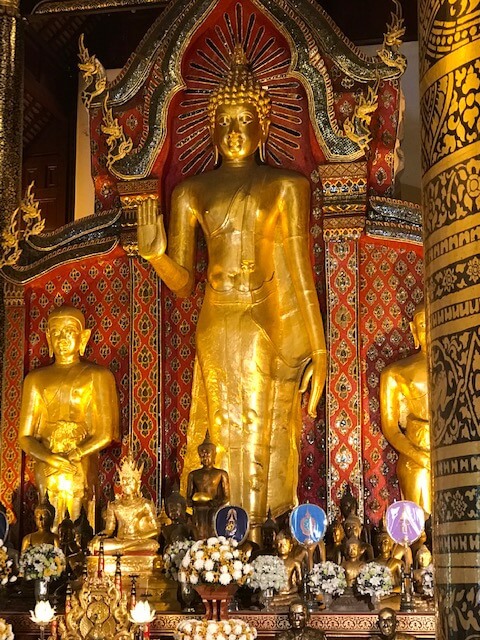
Buddha has the dispelling of fear hand gesture.
Behind the shrine is the Wat Chedi, temple of the great stupa, built during the late 1300’s into the 1400’s.
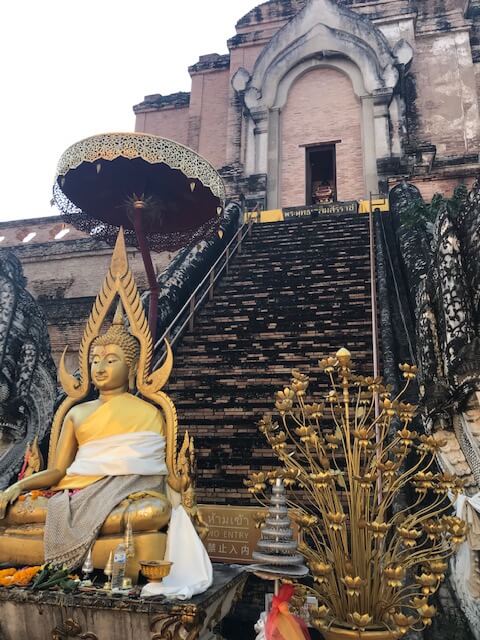
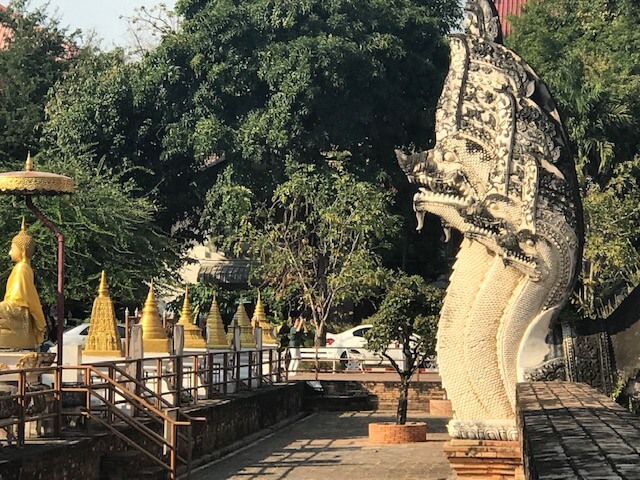
An earthquake destroyed the pagoda in the 1500’s. Restoration ensued. In 1992 they restored the naga (water serpent) on each side of the pagoda.
The significance of this Wat complex is that the Emerald Buddha was stored here when the pagoda was built. Now stored at the Grand Palace in Bangkok, we visited it today, but alas, no photos allowed.
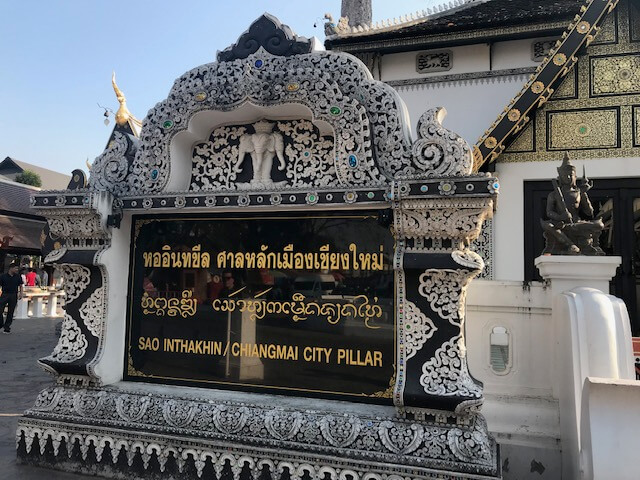
City pillar marks the center of the universe, where at that time, Chiang Mai was the Lanna Kingdom.
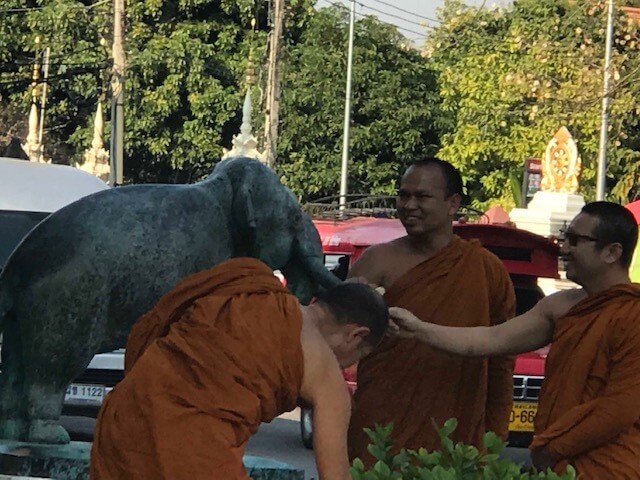
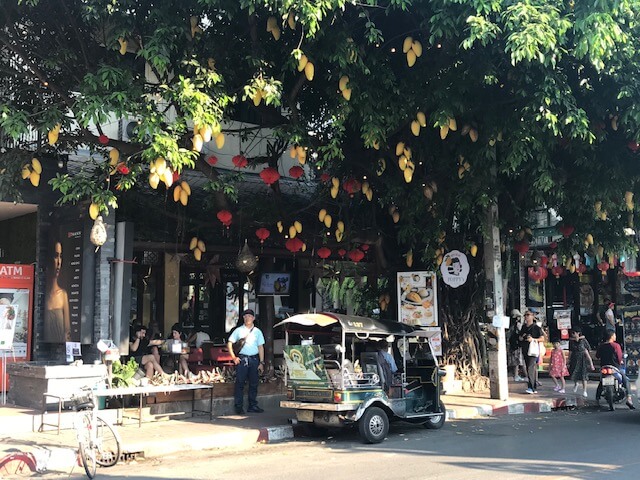
Across the street was another great mango restaurant, Poppy’s. Mango smoothies anyone?
In the evening we went off-piste a bit and celebrated through the delicious aromas of French cuisine.
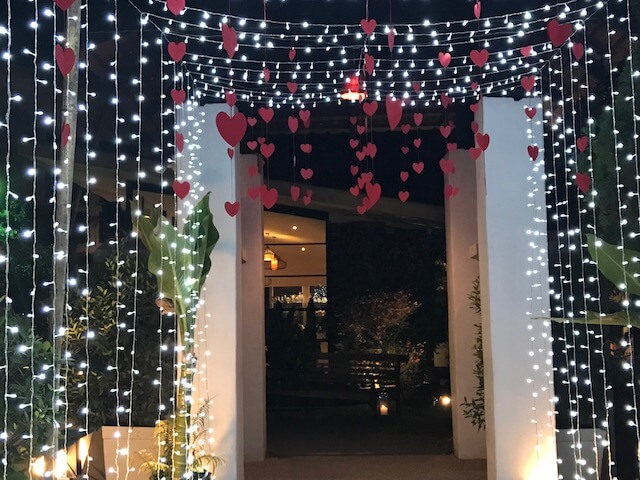
David’s Kitchen offers one of the premier dining experiences of Chiang Mai.
I love the smell of pumpkin—in pie, ravioli or whatever. David’s serves it in soup.
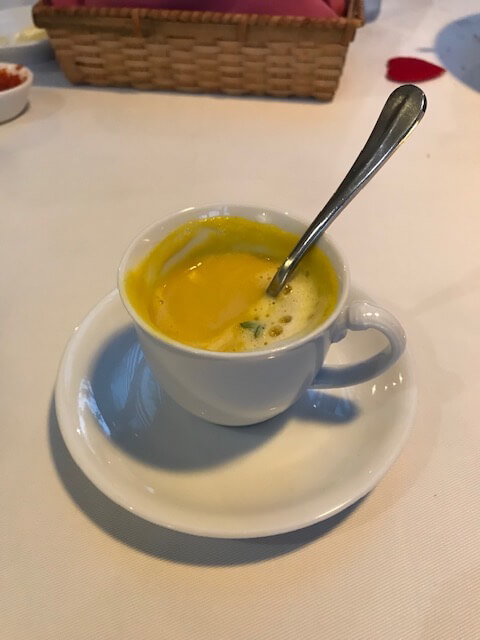
Main courses were tender beef cheeks, lobster ravioli, and a pork chop with cherry sauce, made especially juicy through sous vide cooking.
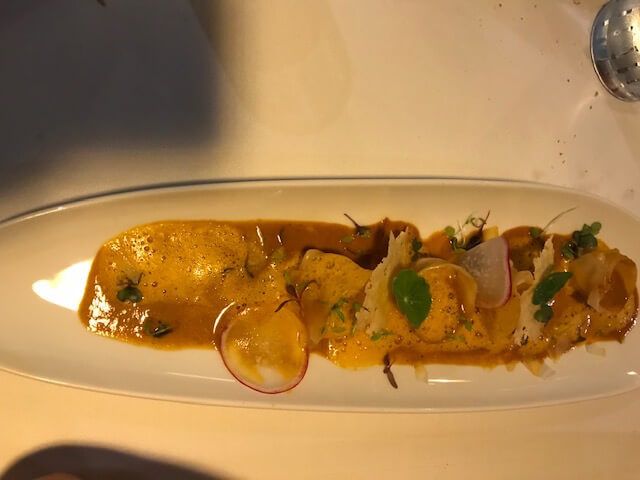
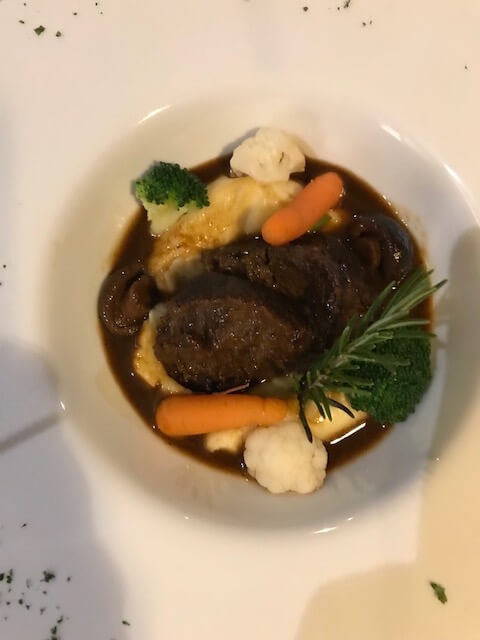
After an almost perfect aromatic day, the tuk tuk ride drove us past the worst smell—rotten onions and sewage. “OMG,” I said. “What is that?”
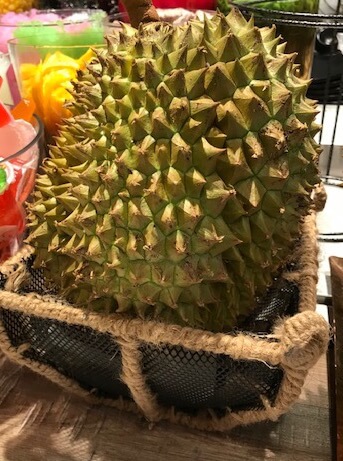
Oh, right. Durian. The Thai people are sensitive to smells, too. Our hotel had a sign that said: NO SMOKING, NO DURIAN ALLOWED. It is the fruit that tastes like heaven but smells like hell.
